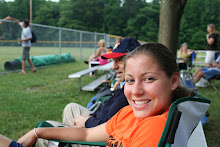
Her work is a combination of images into 1. A panorama where the viewer can see all of the images that were combined. I am interested in panoramic photography work, bu t in mine, I usually take the images I want and combine them in photoshop to make 1 cohesive print. I don't want the viewer to see the images that were stitched together at all, just the overall effect.
Here is what this artist was going for in her very different approach to panoramic photography:
Masumi Hayashi's panoramic photo collages explore the incongruity between appearance and reality in the American experience. She does this by creating photographs of contested sites: abandoned prisons, post-industrial landscapes, Environmental Protection Agency (EPA) Superfund Sites, and the remains of American concentration camps. Yet, the resulting panoramic photo collages exhibit tremendous beauty, laced with both precise detail and abstraction. Without overt or critical commentary, they explore both the surface and the reality behind such places, whether they be panoramic landscapes or haunting interiors.
A key characteristic of Hayashi's work is the fact that her photo collages refrain from overt commentary. She creates work of tremendous beauty and simplicity, even though the landscapes she selects are primarily sites of conflict and contestation. Her work does not preach or condemn. Rather, it entices the viewer to learn and question through attraction to the physical, and often haunting, beauty of a site-whether it be the inherent beauty of the landscape or that which results from the transformations of her artmaking.
To create her panoramic photo collages, Hayashi's process is both systematic and open to change. She begins at the horizon line, shooting approximately two dozen photographs in a horizontal circular rotation until she ends up where she began. She then angles upwards, then downwards, continuing until she has fully captured the landscape around her. After she returns to the studio, she collaborates with a printer to produce the component photographs and begins the final phase of assembling the collages. Rather than submit to a rigid framework, Hayashi plays with the discrete images to determine what might make-first and foremost-a convincing work of art. The resulting photo collages range from a 100 degree to 540 degree rotation and include as many as 140 individual photographs or as few as five.
Hayashi's use of multiple images underscores the insufficiency of a single photograph to capture complex experiences and realities. Viewers must simultaneously process the individual component parts as they try to make sense of the vertiginous perspectives produced by the circular rotation. This is especially the case in Hayashi's photographs of interior spaces, where the camera distorts what the eye and brain naturally process.

No comments:
Post a Comment